DERMOT Farrington was a long established bloodstock agent and advisor with 20 years’ experience, and a considerable reputation as a breeder and pinhooker too, by the time Phoenix Thoroughbreds enlisted him earlier this year to help grow their Australian and European portfolio.
A native of Ballymore, Farrington grew up on a farm but the family always had a couple of mares, and Punchestown was next door.
In Kildare, it is hard to avoid a horse and young Dermot quickly caught the bug.
He cut his teeth at the sales, picking up knowledge and understanding of the thoroughbred first with John Oxx and then at the Irish National Stud.
A spell in France followed before he returned home to Kildangan Stud. Then came the jaunt to Australia to work in Widden Stud and it was this trip that shaped the course of the rest of his life.
“I think I was 25 when I went out on my own – pure naïve. I wanted to be in the game,” says Farrington now.
AUSTRALIA
Martin O’Connor, an Australian breeder and owner who has a lot of contacts in Ireland and an affinity with the Irish, set him up with Macedon Lodge, which is now the private training establishment for Lloyd Williams (owner of the Joseph O’Brien-trained duo Rekindling and Latrobe), but was initially built by Kurt Stern before Williams purchased it in 2017.
O’Connor got him the job to fill 70 boxes at the centre, for reasons Farrington still is unsure of, other than that there is a cache that comes with the Guaranteed Irish stamp in the bloodstock industry.
“There are no easy routes but the Irish have a great advantage because they presume you’re good until proven otherwise.”
He hadn’t a massive budget to spend on individuals so the brief was to buy plenty of cheap ones. He is adamant that you need to deal in numbers to improve your chances of coming across a good one and that belief was more than likely formed from this initial experience, as among this group was Bel Esprit.
The Royal Academy colt won two Group 1s and finished second in four more. He would go on to be the sire of Black Caviar.
The Australian supermare won all 25 of her public outings, including 15 Group 1s, making well over €5 million in prize money.
FAMILY
Farrington was in demand and so he stayed in Australia for nine years before getting married to January Meade – daughter of Manton Estate trainer Martyn – and relocating to Ireland. He maintained his business connections down under – he has been in Australia five times already this year – and his is a line of work in which travel is imperative.
So with that in mind, they moved to Snailwell Stud in Newmarket, in order for January and their three children – Tadgh (10), Poppy (8) and Fonsie (4) – to be closer to her family and have a support network while he was away. Continue below...

He is part of the buying team for his father-in-law at Manton Estate, while Rick Jamieson, of Gilgai Farm, who bred the aforementioned Black Caviar, and Paul Fudge of Waratah Thoroughbreds are two of his main Australian clients.
Farrington bred Aclaim along with John and Joy Barnes of Canning Downs and they were joint-owners too as the son of Acclamation went on to win the Park Stakes and the Prix de la Foret.
So close have they become that Joy is Tadgh’s godmother. It is through Aclaim that he first became involved with Phoenix.
In the meantime, as well as trying to buy the next Group 1 star, he is looking to produce one, either directly or through pinhooking.
“I’ve got all the bad habits,” he jokes. “I’ve often found when the agency work is going well, the trading and breeding can be going bad and vice versa, so it’s nice to have another string to your bow.”
Tell us a bit about your breeding interests.
“I’ve bred some good horses. As a trader, at one stage in their lives I’ve had the dams of Blazing Speed, Together Forever … I’m glad I held onto the dam of Aclaim (Aris) and still have her. Mind you, I did my best to sell her, I can tell you, until Aclaim started racing. Until then, nobody would buy into the idea that she was a good mare.”
Just as well. It goes to show that you never know what to expect really.
“It’s a tough game. No matter what level you’re at, it’s a numbers game. You need numbers and if you don’t, whether you’re a bloodstock agent buying horses, whether you’re a breeder or a pinhooker or whatever you are, if you don’t expose yourself to enough horses, you won’t expose yourselves to enough good horses. To get good horses you have to go through them.”
Do you have any set of rules you follow?
“You’ve got to buy physicals, but turn up is the main rule I have. You’re not going to find a nice horse if you’re an agent unless you turn up at the sales. It’s hard work. Just keep at it. Horses can cost nothing and be good horses. The part that scares me the most is buying the expensive ones. When you buy a cheap one, if it doesn’t work out it can be easy forgotten. It’s buying the expensive horses and making them gallop, that’s a lot of pressure for everybody. Coolmore are the best at it. It seems to me when they go and buy one for a million dollars at Keeneland, or a million quid, they get it right more often than not.”
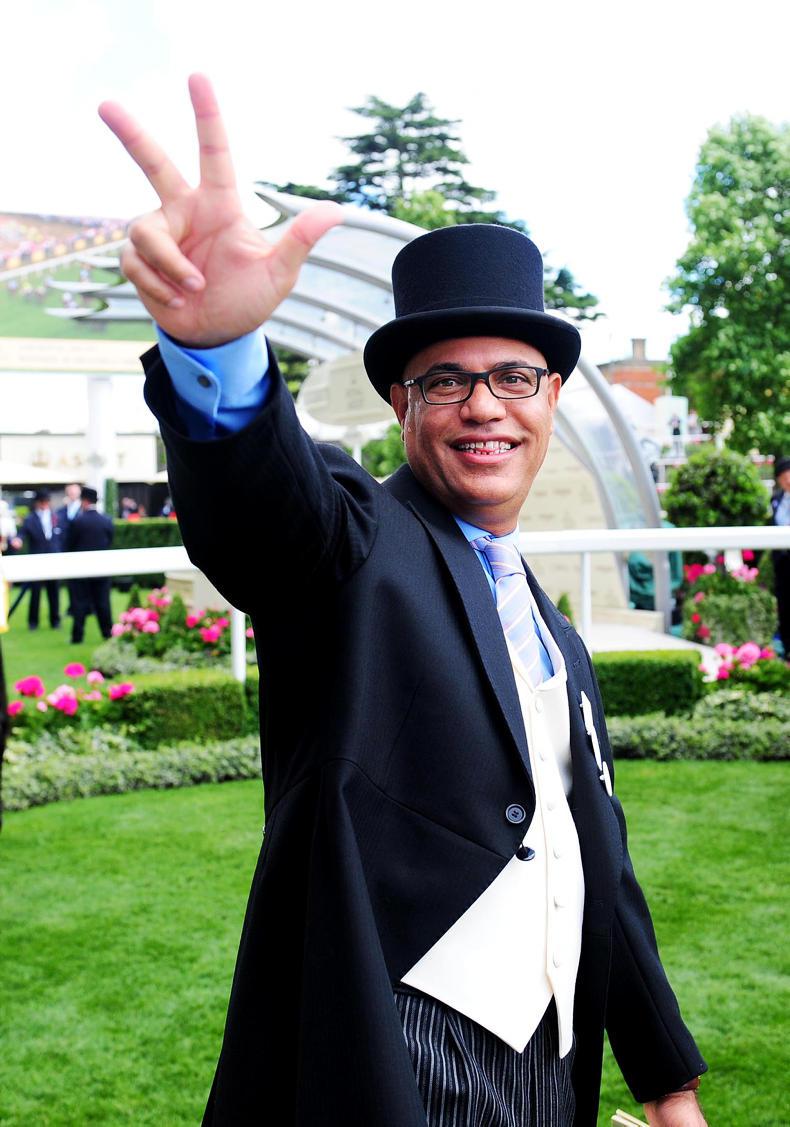
RIGHT: Phoenix Thoroughbred's Amer Abdulaziz at Royal Ascot .
You were busy for Phoenix Thoroughbreds at Deauville last week. How did that link come about?
“They bought into Aclaim. I bred Aclaim and raced him. My father-in-law trained him. When he won the Foret, we decided – it was a hard decision, because he was such a sound horse it wasn’t funny – but we decided it was time to go to stud. They approached me and we did a deal. I still have my other clients but they’re definitely my most active client at the moment.”
You negotiated the purchase of shares in a couple of Australian stallions subsequently.
“They’ve got horses in America, Australia, Ireland and England, and one in France. They’ve got a lot of horses in a short period of time. They’ve got broodmares and racehorses. So it made sense, when they’ve got 25-odd broodmares in Australia. I Am Invincible is a proper sire, a very difficult stallion even to get into if you don’t book early. So they bought a share and a share in Invader as well, who is standing at Aquis Farm, owned by the Fung family, and run by Shane McGrath, who’s a son of John’s. So they’re building a portfolio of bloodstock and, like us all, trying to get to the top.”
So it’s more than racing for Phoenix. It is the long game, to be winning with homebreds and building an empire?
“They have the whole lot. They haven’t got as many mares in this part of the world – only four and they’ve been breeding here to Frankel – but with half of Aclaim and half of Advertise, who I suppose at some stage will go to stud, though it’s too early to be talking about that, I’d imagine that might change.”
They will want to support Aclaim and Advertise.
“It would be a bit premature to talk about Advertise but the first mare that went through the ring in foal to Aclaim, they wouldn’t hear tell of not buying it. So the plan is to support Aclaim.
There’s 135 mares in foal to him and if the foals come out looking as nice as we think they will, I’m sure they’ll be the first ones to the foal sales to buy a few. Aclaim won’t shuttle this year because he had such a busy season but he will shuttle next year – there’s a deal in the wings for that.”
He is standing at the English National Stud. Would there be any objection ever to standing at Coolmore or Darley?
“I wouldn’t see any reason why not.”
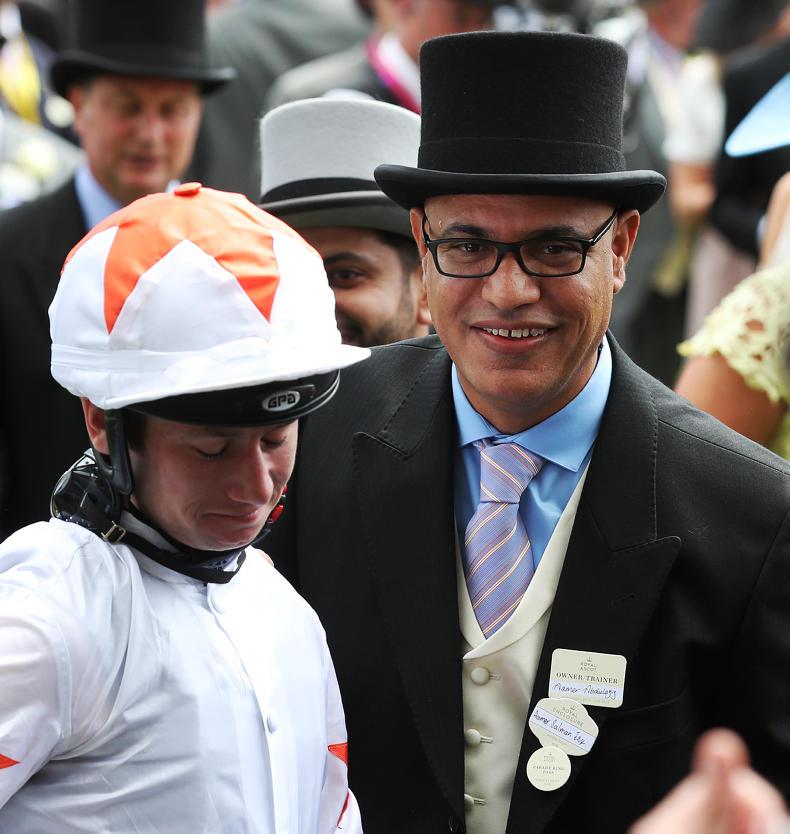
Phoenix Thoroughbred's Amer Abdulaziz after Signora Cabello won at Royal Ascot
Photo.carolinenorris.ie
How many horses have Phoenix racing?
“They’ve a lot of young horses coming through – I don’t do the major stuff in America but in Europe, they probably have 20 in England that are named and could have an entry in the morning. There are three in Ireland: one with Tom Mullins, one with Jim Bolger, and one with Patrick Prendergast.
“They like buying tried horses. We bought into Signora Cabello after she won her listed race, and own her in partnership with Zen Racing. She’s a nice filly who went on to win at Royal Ascot and ran an unreal race in the Morny. Frankie (Dettori) described the ground as ‘doughy’ and Signora likes the ground rattling so when they run again, it’ll be a great race. She has the Cheveley Park in her sights now.”
She has serious value to Phoenix as a future broodmare now anyway. It is interesting that Phoenix have their horses spread around so many trainers.
“Buy and leave is the policy. Sometimes they buy one for a specific reason, that they want it to go run in America or some other specific place.
When they bought into Advertise, it was to buy and leave for the rest of his racing career and the same with John Quinn and Signora, but in others it might be buy, there’s a particular race coming up in the calendar, see can we get the win and then off to California or where it may be. I think it’s a good system.
“They don’t have too many horses in training with one individual. In England, Martyn Meade and John Quinn are the main trainers at the moment, although John only has that filly but I’d imagine he’ll get supported because she’s done well. Martyn has a few. Ed Vaughan, Karl Burke, Robert Cowell, Petter Chapple-Hyam; Michael Stoute has one, Andre Fabre has one in France. I think it’s good to split your chances around the place but I’d imagine those trainers they have at the moment will continue to be the guys when they divide the yearlings out.”
Having bought five in Deauville, will you be similarly active for them at the other major sales?
“They’ve asked me to go to Goffs, to Keeneland and Tattersalls so that would be an indication.”
How much diplomacy do you have to use to assuage fears among clients that you might favour one over another?
“It’s something you have to deal with. Ultimately, I don’t have a thousand clients that this occurs all the time. It has occurred on occasion, but if you’re open, you can do no more. As best you can you try start off with different people. Budget will divide a lot of guys out. Then some guys will want a filly that will make a broodmare if she’s slow, another guy will just want colts, and might want colts to go to Hong Kong and it doesn’t matter what sort of stallion they’re by. Another guy, a colt will have to be by a good stallion. That divides people out naturally.
“Where my job is important is the two lads that do want the same one have the same number and same opinion. Then they can fight over it. You can’t hold back an opinion. If I think a horse is a nice horse and you’re working for two clients at a sale, the clients should be aware that you think it’s a nice horse. They get the same opinion and then you can’t get in trouble. It’s a question I’ve been asked plenty of times but generally it doesn’t happen. How lucky would you be if you had loads and loads of clients!
“I generally don’t buy pinhooking foals for people because I pinhook foals myself. I invite people to come into partnership with me on foals but I don’t buy them for others because I’m buying them myself. That would be no good at all.”
You have an excellent record of backing your judgement and buying horses that have not met their reserve. Absolutely, Ike’s Dream and Abbey Marie were Group 1 winners in Australia, while Eminent has accumulated close to half a million pounds in prizemoney.
“There’s two different things. There’s sales horses, horses that are designed for the shop window that is the sales. Then there are other horses that aren’t suited as much to going through public auction and for one reason or another slip through the cracks. That’s how you get a bit of value.
“When good horsemen are selling horses, you value their opinion. They’ll know more about their horse than we will, whether we look at it once, twice or three times. If you respect the guy that’s selling it, you’ll take note of that. On top of that, I know myself, if I’m selling a good one, I’ll have a good reserve on it which might be a bit unrealistic, it mightn’t meet the market and I’ll be half annoyed with myself for pricing myself out of it.
“The Kelly family are a great racing family in Sydney who have bred loads of Group 1 winners. Most of their Group 1 winners were presented at auction and not sold. You’d see passed in at $300,000 or $250,000.
“They want to sell the horse but when they pass one in for big money, it’s usually a reflection of what their opinion of the horse is and sometimes that just doesn’t meet the market.
“The difference between selling horses in Europe and Australia and America is very simple. Any man will tell you, when he’s going to sell a yearling in Arcana or Goffs, he’s lucky if he’s got two guys bidding against each other. It’s a party. Normally it’s one guy and he’s got to set his reserve and hope the buyer gets the reserve. You go to Australia or America at the yearling sales, you could have seven live players bidding on your horse. So to me, for a horse to pass in in Europe is no surprise. You see it in the clearance rates.”
What is industry like now? Overproduction appears to be a problem again.
“There’s always somebody going on about overproduction. I don’t really subscribe to that. In every industry, the way a commercial market is made up, you can’t have top end unless you have bottom end. Whether there’s overproduction or not, that sorts itself out.
“People overproduce because they have the money to do it and they’ll stop. To my mind, it gives a headache to sales companies trying to fit in all these horses that are commercially not viable but in a free market, that’s part of the business.
“I believe strongly that that’s why, in many ways, we end up with so many good horsemen so addicted to racing because everybody wants to be in it. People see it as a problem, that there are too many of them but ultimately that’s up to individuals to sort out their own.
“You buy five mares and all of them are no good and you’re doing that for a few years, you won’t be long sorting it out yourself, will you? We’re very lucky in Ireland to have all the up-and-coming countries looking to us despite our location. There are plenty new markets coming up for cheaper horses.
“The biggest thing I see when I go home to Ireland, it’s a tough place for young trainers coming through. You’d love to see a couple of more young guys coming through. In England they’ve a lot of young trainers.
“France have a couple of young guys coming through, in their late 20s, and they’ve got big teams of yards, well supported by big owners. At the moment in Ireland, they seem to be light on the ground. They definitely need a dig out. They’re training for very low fees. The prize money isn’t bad compared to England, but it’s a tough gig for them.”
The Irish Field NEWS app is the quickest way to keep up to-date with what’s happening in the equine sector.
Not only will you find all The Irish Field’s newspaper content on the app but you’ll also see daily updates from the racing, bloodstock and equestrian worlds.
The Irish Field NEWS app is free to download and there are always plenty of ‘free’ articles to read. It only takes a minute to register so you can read five Field+ articles at no charge.
It’s easy to share articles with your friends too. Download and review The Irish Field NEWS app today to your tablet and smartphone.
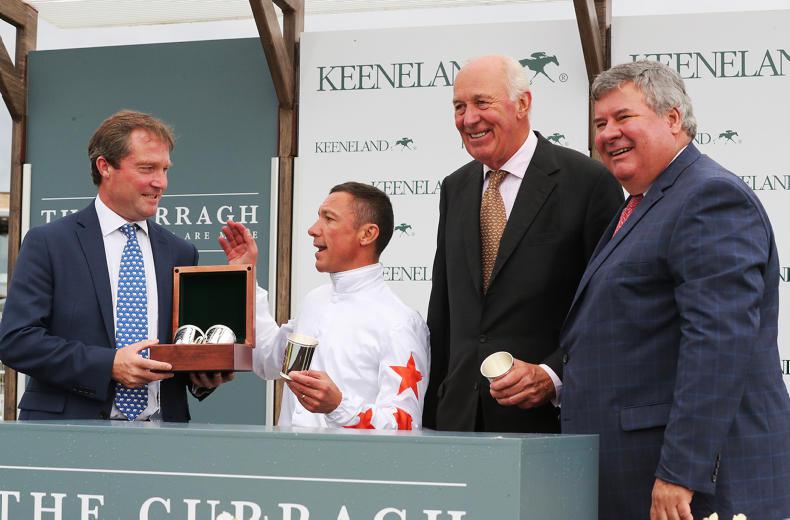

 This is a subscriber-only article
This is a subscriber-only article
 It looks like you're browsing in private mode
It looks like you're browsing in private mode








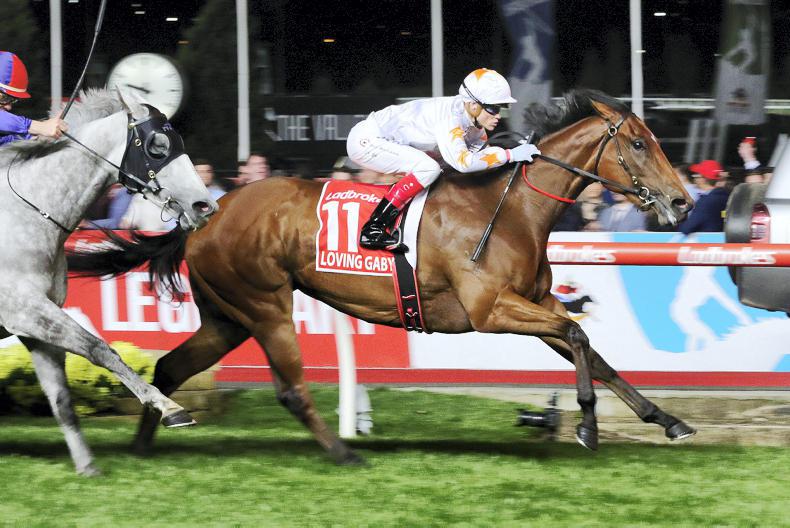

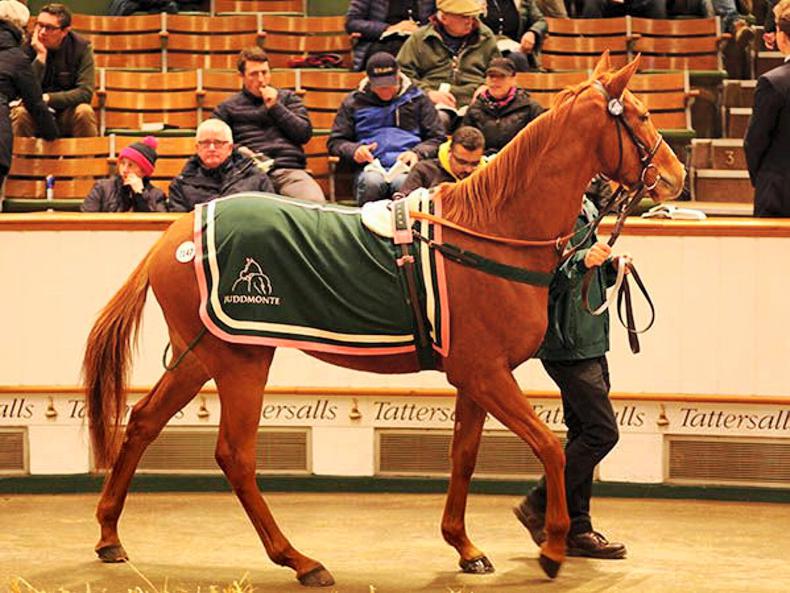
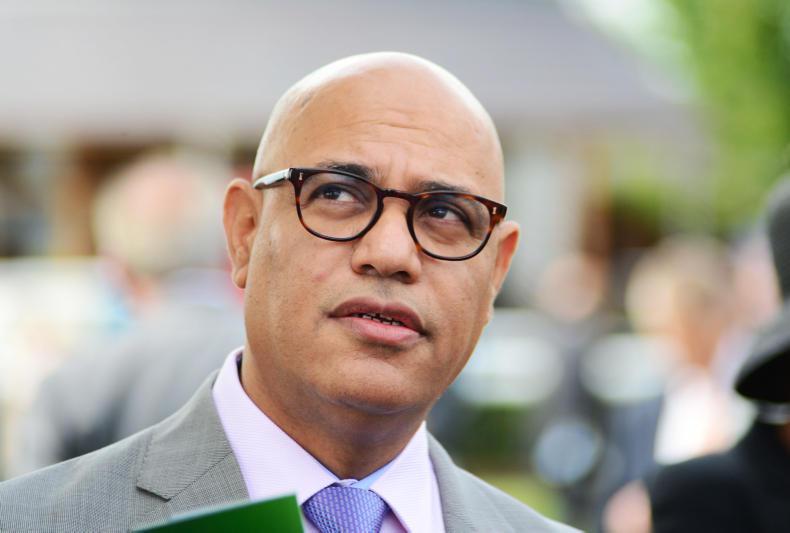
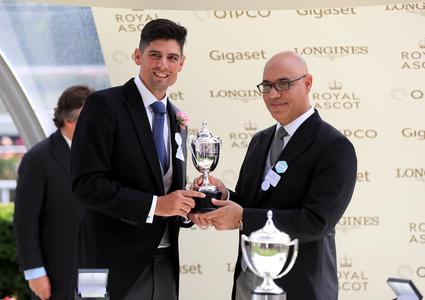
SHARING OPTIONS: